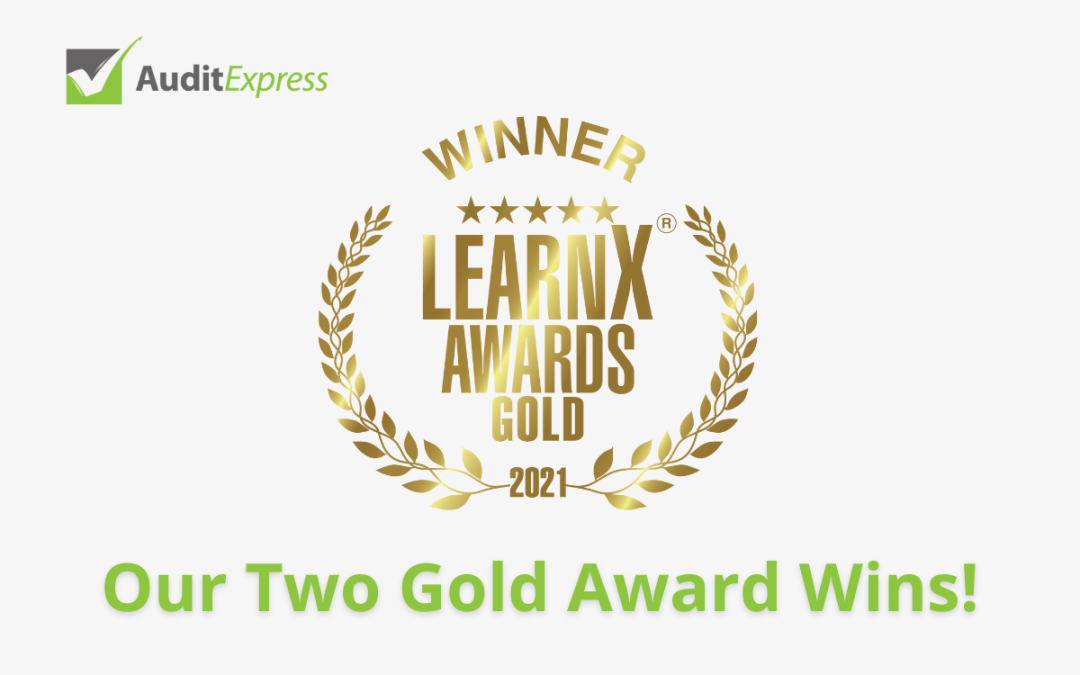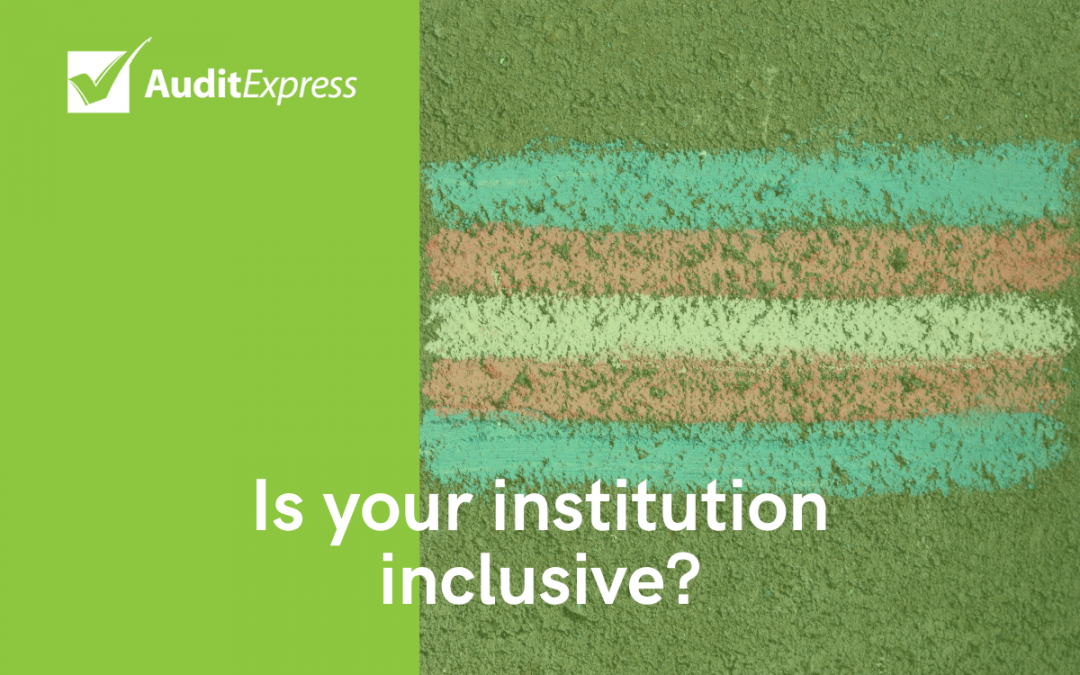
by Adrian Clark | Nov 19, 2021 | Uncategorized
Crack open the bubbles: We have won two Gold awards at this year’s LearnX Awards, which were announced on Wednesday!
Here is a little bit about the award categories and the projects we submitted:
Best Talent Partnership – Compliance Training: Gold Award won in conjunction with Chisholm Institute
In April 2020, we were engaged on a project by Chisholm Institute, focused on overhauling the organisation’s policies and procedures, as well as redeveloping their Education Quality Framework (EQF).
There was a need within Chisholm for greater clarity around the systems and processes within the organisation, as well as developing a shared understanding of roles and responsibilities for key quality tasks.
Surveying of the Chisholm workforce after the delivery of the revamped EQF showed a high level of buy-in for and understanding of the new Framework, as well as a better sense of feeling informed about quality assurance processes.
Why did this partnership work so well? We believe that when an organisation brings in an external expert to drive a change project, they get the benefit of an ‘outsider’s’ point of view. Using the knowledge and experience of external specialists, teams are less likely to fall into the trap of looking at improvement through the lens of history and old habits.
Best Pandemic Response – Compliance Training: Gold Award
The start of the COVID-19 pandemic last year meant so much uncertainty for educational institutions, with providers feeling the added pressure of needing to remain compliant amidst the quick shift from face-to-face to online learning.
Within hours of the announcement of lockdowns, we were receiving calls from clients seeking advice on how they could rapidly update their training and assessment strategies (in some cases for thousands of training products!) to reflect the changes in the delivery of training and assessment.
With our experience in RTO compliance and auditing, we were in a good position to assist not only our clients, but to extend our help to the wider RTO community.
We provided guidance to the sector in collaboration with ASQA on how to maintain compliance throughout the COVID-19 pandemic. We also ran a series of free webinars in collaboration with VELG and the VET Development Centre, that were open to the entire VET sector, focussing on guiding training providers through how to cope with and respond to the changes brought about by the lockdowns, whilst maintaining compliance.
We then made available a series of tools and resources for RTOs that would help with record-keeping – in particular – a free online TAS (Training and Assessment Strategy) Change Register, that was used by hundreds of training providers across Australia.
The industry responded with really positive feedback and gratitude for saving them time and cutting out a few headaches during a stressful period.
A huge shout out to the team of incredibly hardworking professionals we are fortunate to have here at Audit Express.

by Adrian Clark | Nov 11, 2021 | Uncategorized
Transgender Awareness Week kicks off on the 13th November this year. It’s not only a celebration of transgender pride, but also a crucial time to continue to educate the wider community on transgender and gender diverse individuals and the issues associated with their transition or identity.
Many organisations have already put in place inclusivity policies to support their staff, customers and stakeholders to feel accepted and acknowledged.
Whilst we’ve seen great progress over the past few years in institutional inclusivity, there is still a long way to go.
We wanted to share with you our suggested guide to inclusivity for the education sector. We hope this helps to encourage change and start conversations to ensure that everyone feels equal and accepted.
A Guide to Gender and Identity Inclusivity for Educational Institutions
Language is a powerful tool to communicate with each other and we have an opportunity to build language that is inclusive, empowering and influential.
Some simple tips for taking an inclusive approach:
- When unsure of how someone would like to be addressed, use gender neutral pronouns (they/them/theirs) until you are told by the person. Try not to assume someone’s gender or pronouns based on their appearance. (Mistakes do happen, and it is always good to let the person know that it wasn’t intentional and to use the correct pronouns moving forward.)
- In documents, look for the opportunity to use gender neutral identifiers – for example, they were going to the shops; it was their decision etc.
- Use gender neutral position titles when talking about job roles, for example:
- Police officer (instead of policeman)
- Fire fighter (instead of fireman)
- Wait person (instead of waitress)
- When creating training material or role plays, try to avoid gender stereotypes (i.e. don’t make all doctors male and all nurses female). It is important that everyone sees themselves in the material presented, adding more diversity will improve engagement from gender diverse individuals or those seeing employment in roles traditionally seen as being outside their gender.
- When collecting personal information, ask yourself if there is a legitimate need to collect someone’s gender identifier. If it’s not information that is essential to what you do, then it’s best to leave it out. A good substitute would be asking someone about their preferred pronouns instead.
- If someone’s gender information is a requirement, then consider what options to present. Ensure you don’t limit to only male and female options, and remember intersex is not a generic term for everyone that does not sit within the gender binary. Database software and government records may limit the options you can record (for example, AVETMISS only has Male, Female, Other (X) and No answer (@) as options). Consider how this question is worded so it is inclusive for everyone while still fitting in with the options provided. Example wording may be:
- Gender: How do you identify?
- Male
- Female
- Prefer to self-describe (provide written option)
- Prefer not to say.
It is important to remember that inclusivity and diversity is important to everyone, even those who don’t identify as gender diverse. Allowing everyone to see that their gender doesn’t define their education, career and opportunities is important, regardless of how they identify.
Diversity and Inclusivity Policies for Workplaces
All organisations should have a diversity and inclusivity policy.
Being able to demonstrate to your employees, clients and stakeholders that you are an inclusive organisation is good for your business, both financially and for the health and wellbeing for your employees and clients.
Research shows that LGBTQIA+ supportive policies are linked to greater job commitment, increased job satisfaction, and better health outcomes among LGBTQIA+ employees.
Any policy and values statement should reflect your businesses values and your commitment to diversity and inclusivity. These documents should not be a generic statement but one that you and your business is willing to adopt as part of your business practices as having a policy and values statement is only one part of the equation. It is important that your organisation embraces what the policy stands for and drives it through every part of your business.
There are many resources out there to help you develop a policy – creating one from scratch can seem like a daunting task!
Here are some good diversity policy resources to help develop your own:
Further Resources:
There are several great resources available both from government and non-government organisations. While this isn’t a definitive list, they can provide further guidance on how to improve your documentation to make it more inclusive:
- Non-Government Organisations:
- Government Guides for inclusive language
- State Education Departments Resources


